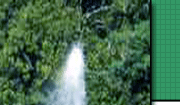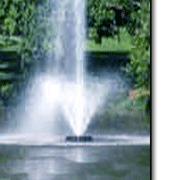Your Pond and the Seasons
Pond Dynamics: Understanding Autumn
adapted from an article by Charlie Barebo,
CEO & International Regional Manager Otterbine-Barebo
(Otterlink Oct/Nov 2005)
As the seasons change, so do pond and lake dynamics. The two climatic
factors which have the greatest impact on seasonal variations in
water quality are temperature and light. Biological activity in
the pond is directly tied to these two factors. As such, a thorough
understanding of these seasonal changes will help to guide you
to timely solutions.
Temperature has a significant impact on both plant and animal
life, simple and complex, in the aquatic ecosystem. Since few forms
of
animal life in the pond are warm blooded, the effects of lower
temperatures are significant. Fish and other cold blooded species
slow and will become dormant when temperatures drop low enough.
As temperatures drop, so do the metabolic rates of bacteria and
protozoa, Mother Nature's "garbage disposals" so to speak.
Digestion rates are tied to water temperature, the lower the temperature
the slower the rate of decomposition. See the chart for a simple
rule of thumb for bacterial decomposition rates (i.e. oxygen demand).
Temperature (°C) |
Decomposition Rate |
28 to 39 |
Optimum |
13 to 27 |
5 to 15% slower |
9 to 13 |
30% slower |
5 to 9 |
Over 60% slower |
To achieve similar decomposition rates the bacteria population
must be increased considerably in cold water. Plant life as well,
is significantly affected by colder water and we see much slower
growth rates in the Autumn season. The good news is colder water
has the capacity to hold more dissolved oxygen, in fact more than
40% more.
Light plays a significant role in the process of photosynthesis.
As light decreases, so does the photosynthetic rates of plants.
They are growing slower or not at all! Bottom rooted weeds and
algae miraculously seem more manageable or disappear.
The one constant in Autumn is nutrient loading in the pond. Non-source
pollutants and fertilizers will continue to leach or run off into
the pond. Leaves, water fowl and fish waste, dead or dying aquatic
plants including algae sink to the bottom. The end result ... as
bacterial digestion rates slow and approach net zero, the nutrient
levels of the pond continue to increase. This places the pond out
of balance, adding to the sludge bed and the "aquatic compost"
pile at the pond bottom. It's guaranteed to give the pond owner
bigger headaches next year.
* Look for upcoming articles on the other seasons.




